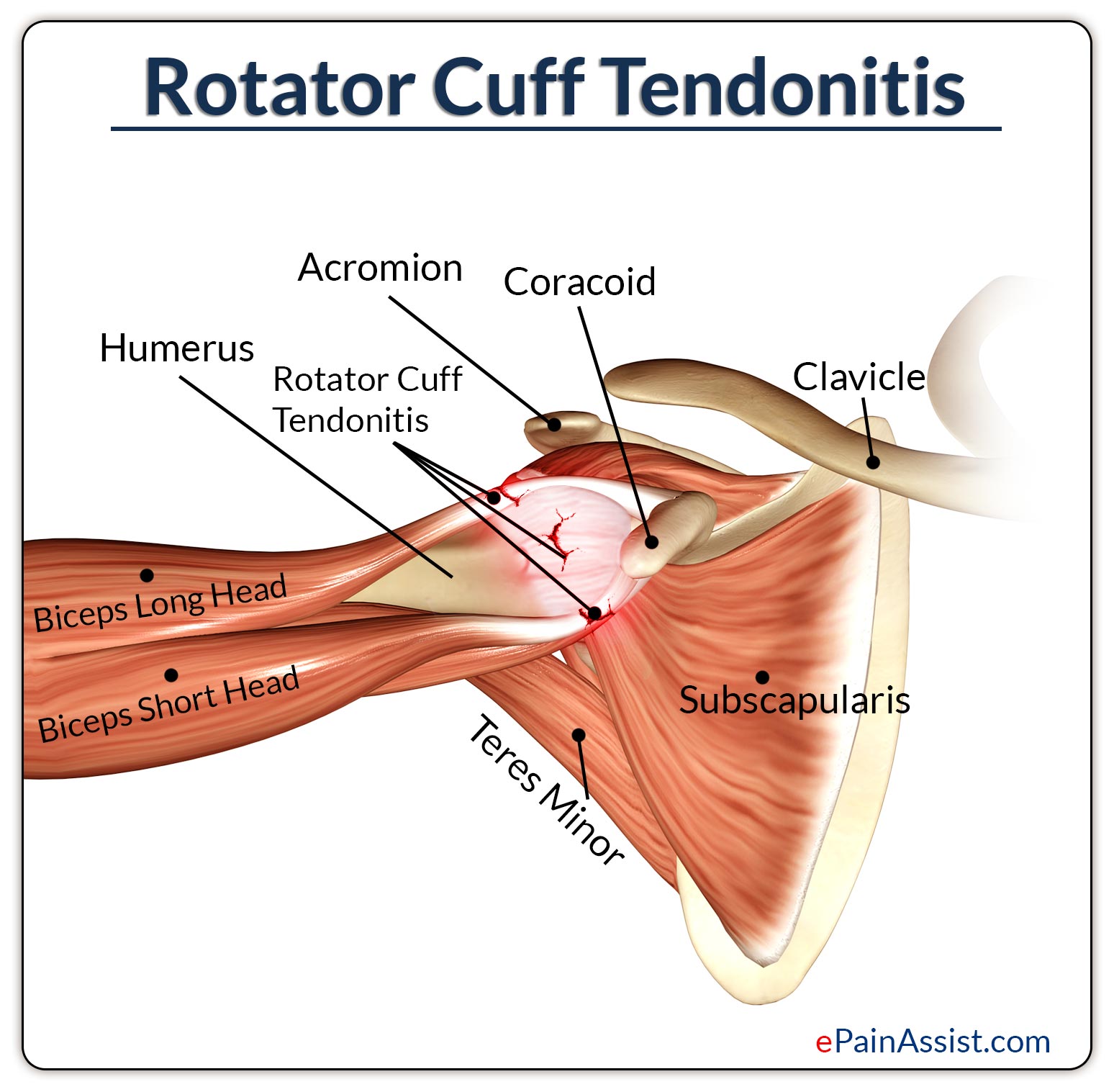Rotator cuff tendonitis is a medical condition in which there is pain in shoulder, the shoulder tip, and upper regions of arm. This pain tends to get worse with activities like pulling, pushing, lifting, or reaching for objects. The symptoms are pain and weakness in shoulder.
How Can Massage Help Rotator Cuff Tendonitis?
Massages are thought to be one of the best methods for increasing blood flow to the injured area, thus increasing oxygenation speeding up the healing process. Massage therapy also facilitates reduction of scar tissue formation since scar tissue restricts mobility.
Deep Tissue Massage Therapy To Treat Rotator Cuff Tendonitis
- Deep Tissue Massage does wonders in cases of soft tissue injury. Other than providing stimulation locally, massage therapy also encourages production of Anti-Stress hormones which in turn decreases pain and discomfort. Massage therapy should not be done in cases of joint swelling.
- During the initial stage of a rotator cuff injury, light and superficial massage should be done. Deep tissue massage should be started after pain and swelling have calmed down.
- Superficial massage helps in increasing blood flow along with preventing scar tissue formation. This in turn promotes healing and re-establishes the normal function of rotator cuff. This when done along with Ice Therapy provides abundant benefit in healing and restoring the joint functionality.
- Using a small tennis ball, lay on the back.
- Try moving the body so that a specific point is massaged with appropriate pressure required.
- Always do some lateral and forward stretching along with back massage in order to improve blood circulation.
- Application of coconut oil along with aroma oils facilitates instant relief and improves joint flexibility.
Deep Friction Massage Therapy for Rotator Cuff Tendonitis
Friction massage is helpful in tendonitis as long as you reach the affected region. You should rub slowly and gently back and forth over the inflamed tendon at the region of extreme tenderness. The massage strokes should be perpendicular to the tendon fibers. Gentle to moderate pressure should be used with the pads of fingers or thumb. Strong pressure is not advisable especially for self-massage. Even the mildest or gentle friction massage causes discomfort. The pain is burning or sharp is nature, but is bearable. In case the friction massage is painless or if the pain is dull in nature, then it is likely that you are massaging in the wrong region or you don’t have tendonitis. If there is too much pain, then either you are massaging too hard or the tendonitis is too severe to be treated by self-massage. The pain and discomfort significantly subsides after one or two minutes. If the pain continues, then stop the massage. If the pain and tenderness subsides, increase the intensity of the massage until it returns. Wait till it subsides again, then increase the intensity the third time. Wait again a third time for the tenderness to ease. It should be done in the following manner:
- Friction massage should be done for 1–2 minutes until the tenderness or sensitivity subsides.
- Increase slightly the intensity of the massage and continue it for 1–2 minutes until the sensitivity subsides again.
- Again slightly increase the intensity. Continue to friction for 1–2 minutes until sensitivity subsides.
- Finish the massage with icing at the massage site, for a maximum of two minutes or until the area is numb (whichever comes first).
- The complete massage treatment takes around 3-6 minutes, and should be done at least once a day and a maximum of three times a day.
- Drink plenty of water to flush out the toxins from the area while encouraging healing and relieving pain by ice application to the tendon immediately after the massage.
Also Read:
- Rotator Cuff Injury: Best Treatments and Recovery Note
- Rotator Cuff Tear: Types, Causes, Risk Factors, Symptoms, Diagnosis, Treatment, Recovery, Rehabilitation, Complications
- Rotator Cuff Impingement: Symptoms, Causes, Treatment, Prognosis
- What Does A Torn Rotator Cuff Feel Like & How Long Does a Rotator Cuff Injury Take To Heal?


